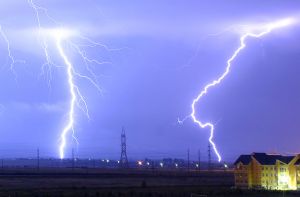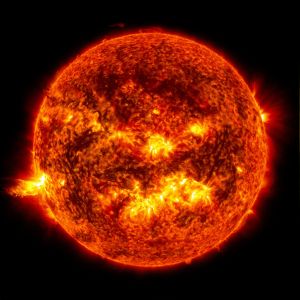Energy
The concept of energy exists across the galaxies, and has many applications.
On a basic level, energy is the measurement of a physical system's ability to do work. It has the ability to be measured, but the concept of energy is not absolute, and so has to be measured relative to the circumstances around it. Like matter, energy cannot not be created or destroyed, only redirected or altered.
Energy for starship purposes could be derived from many different reactions, the most common of which were matter-antimatter reactions and nuclear fusion. An antimatter reaction has always been calculated using Einstein's equation, E = mc2. In theory, the combined annihilation of one kilogram of antimatter with one kilogram of matter will produce 1.8×1017 joules of energy (180 petajoules).
Different types of energy:
- Mechanical
The sum of potential energy and kinetic energy.
According to the principle of conservation, the mechanical energy of an isolated system remains constant in time,
as long as the system is free of friction and other non-conservative forces.
- Electric
Derived as a result of movement of electrons, and has been converted from electric potential energy.
This energy is supplied by the combination of an electric current and an electric potential, delivered by a circuit.
All electrical energy is potential energy, before it is delivered to the end-use. Once converted from potential energy,
electrical energy can always be called another type of energy.
- Magnetic
The spinning of electrons around the nucleus of an atom creates a tiny magnetic field.
The electrons in most objects spin in random directions, and their magnetic forces cancel each other out.
The magnetic vector at any given point in space is specified by two properties, its direction and its magnitude, or strength.
- Gravitational
Potential energy a massive object has in relation to another massive object, due to gravity.
The potential energy associated with the gravitational field is released when the objects fall towards each other.
Gravitational potential energy increases when two objects are brought further apart.
- Chemical
The energy of chemical substances that is released when said substances undergo a chemical reaction, and transform into other substances.
The breaking and re-making of chemical bonds involves energy, which may be either absorbed by or evolved from a chemical system.
- Ionization
The minimum amount of energy required to remove the most loosely-bound electron of an isolated neutral gaseous atom or molecule.
A measurement which means the amount of energy required to remove one electron while that substance is in a gaseous state.
It is always measured starting with an outer shell, moving inward towards the nucleus.
- Nuclear
Nuclear energy is the energy in the nucleus, or core, of an atom. Nuclear energy can be used to create electricity, but it must first be released from the atom.
Reactions that absorb energy are called endothermic reactions, and any absorptions that release energy are called exothermic reactions.
- Chromodynamic
The energy binding quarks together into hadrons. Motion-energy and interaction-energy contribute most of the hadron's mass.
Also known as "Quantum chromodynamics," this helps to predict the existence of exchange particles called gluons, which are also massless,
but whose interactions occur in a way that confine quarks to bound particles.
- Elastic
Energy that is stored when materials stretch or compress. It is the capacity for doing work based on the object's electric charge.
Examples include springs, rubber bands, and slingshots.
- Mechanical Wave
Energy that is possessed by an object due to its motion or due to its position.
It can be either kinetic or potential, and is the moving energy (kinetic energy) of an object plus that object's stored energy.
- Sound Wave
A form of energy that can be heard by living things. Only those waves that have an average frequency of 16 Hz to 20 kHz are audible to Humans.
Different species can hear different hertz of energy, with Ferengi being the prime example.
Sound waves that have frequencies below 16 Hz are called infrasonic, and those above 20 kHz are called ultrasonic.
- Radiant
The energy of electromagnetic and gravitational radiation. It is most commonly used in the fields of radiometry, solar energy, heating, and lighting.
It is, most basically, how bright something shines, and refers to how far away that brightness can be seen.
- Rest
The portion of the total mass of an object, or system of objects, that is independent of the overall motion of the system.
The characteristic of the system's total energy and momentum that is the same in all frames of reference
- Thermal
Produced when a rise in temperature causes atoms and molecules to move faster, and collide with each other.
The energy that comes from the temperature of the heated substance is called thermal energy.
Uses in Starship systems
- Electro-plasma distribution network (EPS Conduits)
- Impulse reactors (fusion reactor)
- Main power plant
- Warp core (matter-antimatter reaction assembly)



